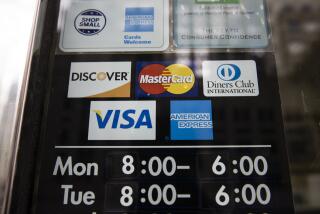Debt looks different to those FICO folks
Question: When I ordered my FICO score, one of the reasons given for my low score was: “The amount owed on your accounts is too high.” Since I own marketable securities that are worth twice as much as my debts, how did they come to this conclusion and what can I do about it?
Answer: The two major components of a credit score, which on average account for two-thirds of the total score, are payment history and amounts owed. The first is a record of how well you have met your obligations over the years; the second is a snapshot of your indebtedness right now. If your credit history is short, current indebtedness can be the most important factor determining your credit score.
Ordinarily, a financial advisor seeking to decide whether consumers were living within or beyond their means would look at debts relative to assets and income. But the FICO credit scorers don’t have information on assets or income, only on debt.
They compare the outstanding debt on each of your accounts with the maximum amount of debt the credit grantor has set for you on that account. This generates a set of “utilization rates” for each of your accounts.
For example, if you have two credit cards with maximum balances of $4,000 and $5,000, and if the actual balances are $3,000 on both as of the most recent date of record, the utilization rates are 75% and 60%, respectively.
All other things being the same, the higher the utilization rates, the lower the FICO score. The FICO genie interprets high ratios to mean that the borrower is living closer to the edge.
Beyond this type of broad generalization, the genie keeps his cards close to his vest. Fair Isaac Corp., the company that developed the system, doesn’t let consumers look at their formulas, but total debt to total credit available is a factor.
The data on debt balances used to compile a credit score are reported by credit grantors and can be incorrect. That’s why it is a good idea for consumers to check their credit well before they go into the market, giving themselves time to fix any errors.
But there is another potential problem with the data on utilization rates. Some credit grantors do not report maximums on all revolving accounts.
When no maximum is reported, the largest balance ever to be reported on the account is used instead. This usually results in higher utilization rates for such accounts.
For example, a customer has a $1,000 balance on an account on which the maximum is $10,000. Awhile back, the customer had a balance of $2,500, which is as high as it has ever gone. If the maximum is reported on this account, the utilization rate would be 10%, but if it is not, the rate would be 40%. And the customer’s credit score would be lower as a result.
Consumers ordering credit scores through Fair Isaac can get a list of all their credit grantors and credit limits. If any have no reported limit, consumers can either ask the credit grantor to report the limit or terminate the relationship.
In the event that the credit grantor won’t report the limit but a customer wants to maintain the relationship anyway, one strategy would be to shift all balances into this account temporarily so that the highest balance comes closer to the unreported maximum.
Strategies for an early loan payoff
Question: To pay off my mortgage sooner, I have been increasing my monthly payment by one-twelfth. My lender has suggested that I switch to a weekly payment plan, for which they charge $1 per payment. Would this plan result in my paying off my loan sooner?Answer: No, because weekly payment plans do not involve any additional payments. Your monthly payment is multiplied by 12 and divided by 52 to get the weekly payment, so you make the equivalent of 12 monthly payments a year. When you increase the monthly payment by one-twelfth, you make the equivalent of 13 payments a year.
You can make the two scenarios comparable by increasing the weekly payment by one-twelfth as well. Then you would make the equivalent of one extra monthly payment a year in both schemes. If you did that, you would pay off the mortgage a little sooner using the weekly payment plan, provided the payments are applied weekly — meaning that the balance is reduced every week. Ask the lender whether weekly payments will be applied weekly or whether they are held until the end of the month.
A weak argument for weekly plan
Question: I was told that my weekly payments are held in a special account, and on the first of every month a withdrawal is applied to the mortgage payment. How does that work?Answer: That means that there is no interest savings to you in making weekly payments. If a payment fee is added to the balance, your loan will pay off less quickly than under the monthly payment plan you are using now.
The only possible benefit is the budgetary discipline the weekly payment plan requires.
More to Read
Sign up for Essential California
The most important California stories and recommendations in your inbox every morning.
You may occasionally receive promotional content from the Los Angeles Times.






